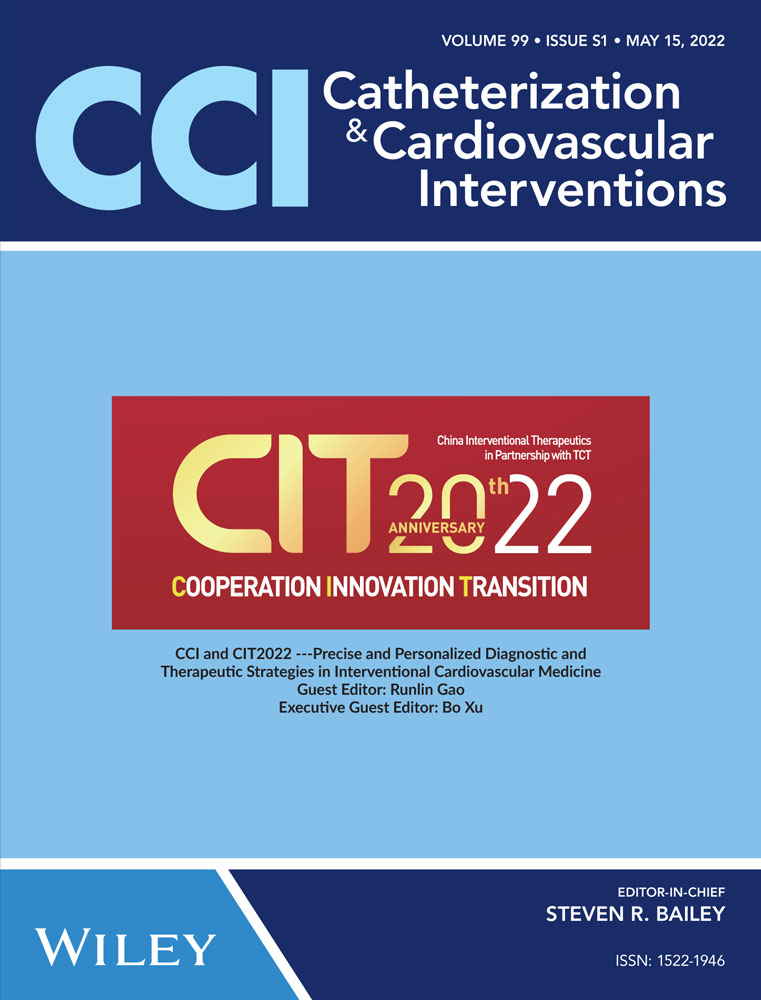Predictors and clinical significance of periprocedural myocardial infarction following rotational atherectomy
Abstract
Objectives
To investigate the potential predictors and clinical significance of periprocedural myocardial infarction (PMI), as defined by the latest Fourth Universal Definition of Myocardial Infarction (2018), following rotational atherectomy (RA).
Background
PMI is not uncommon in patients undergoing RA, although the predictors and prognostic impact are unknown.
Methods
Data from 229 consecutive patients who had undergone RA before drug-eluting stent (DES) implantation in a single center were analyzed. Patients' demographic information, clinical, angiographic, and procedural characteristics, and 1-year follow-up outcomes were collected retrospectively.
Results
The overall incidence of PMI in patients undergoing RA was 48.5%. Age (adjusted odds ratio [OR]: 1.024, 95% confidence interval [CI]: 1.001–1.047, p = 0.043) and ejection fraction (adjusted OR: 0.977, 95% CI: 0.962–0.993, p = 0.004) were independent predictors of PMI in RA, although PMI was not associated with an increased risk of major adverse cardiovascular and cerebrovascular events (MACCEs) at the 1-year follow-up in patients undergoing RA.
Conclusion
Age and ejection fraction were independently associated with an elevated risk of PMI in patients undergoing RA. However, post-RA microinfarcts were not associated with an increased risk of MACCEs over the short-term follow-up period.
CONFLICT OF INTERESTS
The authors declare that there are no conflict of interests.
Open Research
DATA AVAILABILITY STATEMENT
The data that support the findings of this study are available from the corresponding author upon reasonable request.




